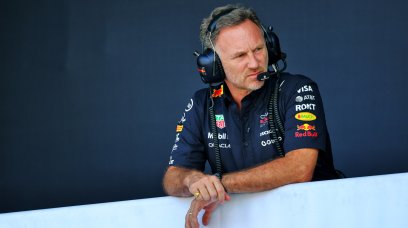Formula 1 is a complicated sport and rookies have the arduous task of trying to understand everything that goes with being an F1 driver. Yuki Tsunoda, Nikita Mazepin and Mick Schumacher are the latest drivers who have had to deal with the complexity of modern F1. Outright speed is just one major factor that the best drivers have. The turbo-hybrid era introduced new power units in 2014 which created a headache for the teams and drivers. Throw in some sensitive Pirelli tyres and the endless amounts of data that is constantly analysed, rookies have it tough and it's a very different challenge to that of previous decades. "Believe me for these young drivers, it's really difficult to come into Formula 1," AlphaTauri team principal Franz Tost told RacingNews365.com and other select members of the press. "You can't expect that that a rookie knows everything from the very beginning. That's the reason why I always say a young driver needs three years to understand this complicated F1, because F1 has become much more complicated compared to years before." Long gone are the days of in-season testing where a driver could spend days in the car to get to grips with their high-speed machines. Whilst simulators are great, it's not the same as being on a race track and this is another area where rookies have been hindered. Article continues below image
For 2021, pre-season testing was just three days long. This meant each driver had 12 hours of track time in the car. Just six years ago, there were 12 days of pre-season testing. Practice has also been reduced to just three hours in total, compared to four hours. It all adds up and the relentless nature of a 23-race calendar does not allow much time to deeply analyse a weekend as you are focusing on the next race which sometimes begins just five days later. "At every race weekend, they do [for] the first time qualifying there," said Tost. "Of course you can say 'no, they did it in FP1, FP2, FP3, they must know where to go'. "No, for example, the wind is maybe increasing or coming from another direction or the track is hotter or colder. So many things are changing." Tsunoda in particular has been closely watched by many people within F1 this year. He's made a string of errors despite showing glimpses of form and Tost has openly discussed how small changes in the conditions are difficult to understand for a rookie. Article continues below image
Tost talked about Tsunoda's crash during qualifying at the French GP as an example and claimed it's part of the learning process that the Japanese driver has to understand. "When I remember back to the accident in Paul Ricard when Yuki crashed, we had some understeering problems in FP3, then we decided to give more front wing to do more work on the front suspension," Tost explained. "He came to this corner, turned in and then the car slid more than he expected, came over the kerbs and there was also some wind direction changed and then he crashed. "But, you cannot teach this [to a] young driver. He has to learn in every qualifying session, what to do on this track. Definitely experience is important and Yuki is improving really well." At Haas, things are slightly easier for Schumacher and Mazepin since the team have eased the pressure by saying they expect to be at the back of the grid. Any small errors or lack of pace is not scrutinised as much because the Haas pair are only battling each other. Haas are using this year as a transitional season which has allowed both drivers to learn and understand the complexities of modern F1 without any real pressure which Tsunoda has to contend with. Despite being under the spotlight less, Mazepin has spoken about being lost with the car and has clearly found it tough to adapt to F1. "I'm very new in Formula 1," said Mazepin. "I'm still discovering those things [with the car weight for example making such an impact]. "For example, that in Formula 2 would have not been so important, but I think Formula 1, it is such a high performance environment. I'm just coming to realise that it's a lot more complex than I would have imagined going to beginning of this year in technical side of things." Article continues below image
Communication such as listening to your engineer, having to learn what every dial does on your steering wheel and how to manage your tyres yet retain a good pace - those are just some of the details that takes years to fully understand. This is without thinking about having to drive your car as fast as you can whilst racing against other drivers who may have up to 20 years worth of experience in F1. It's an awful lot to take in, in a short amount of time. This is why Tost is optimistic about Tsunoda's chances in the pinnacle of motorsport and explains why the AlphaTauri team boss remains happy rather than frustrated with his driver's rate of learning. "The complete process is absolutely in the right direction and he didn't change the approach," said Tost. "He had already beforehand a good approach but now he has much more time with the engineers because he's living in Faenza, every day he is spending hours with the engineers. "This helps him to understand the car from the mechanical side and the power unit side and a young driver has to learn this. "I'm very happy with your Yuki, he shows a fantastic, natural speed and he's improving day by day, session by session. "I'm quite optimistic that we will see very good second half of the season and that Yuki will also be successful in the future."
Most read







